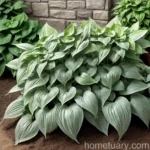All You Need to Know About Hosta ‘Empress Wu’
In the world of ornamental plants, hostas are highly sought after for their large, textured foliage and their ability to thrive in the shade. Hosta ‘Empress Wu’, in particular, is celebrated for its majestic size and striking presence in gardens. Whether you are new to gardening or an experienced plant enthusiast, understanding the culture, uses, and care requirements of Hosta ‘Empress Wu’ can help you make the most of this stunning plant in your own garden.
What is Hosta ‘Empress Wu’?
Hosta ‘Empress Wu’ is a cultivar renowned for its impressive size and regal appearance. It was named after the only female empress in the history of China, Empress Wu Zetian. This hosta was developed by plantsman Brian and Virginia Skaggs of the Green Hill Farm in the United States.
The ‘Empress Wu’ cultivar is known for its massive, deeply veined, and broadly shaped green leaves, which can measure up to 18 inches in length. The plant also produces light lavender flowers in midsummer, adding an elegant touch to its already grand presence. With its ability to create a dramatic focal point in a garden, Hosta ‘Empress Wu’ has become a favorite among enthusiasts of ornamental foliage.
Key Takeaways – Hosta ‘Empress Wu’
Culture
- Hosta ‘Empress Wu’ is a resilient and easy-to-grow plant.
- It is particularly well suited for shaded or partially shaded areas.
- This hosta thrives in moist, well-drained soil.
Uses
- Hosta ‘Empress Wu’ serves as a striking focal point in garden landscapes.
- It is commonly used as a groundcover in shaded areas.
Water
- The plant requires consistent moisture to thrive.
- Regular watering, especially during hot and dry periods, is essential.
Sunlight
- Hosta ‘Empress Wu’ prefers shade or filtered sunlight.
- It can tolerate some morning sun but should be protected from the harsh afternoon sun.
Fertilizer
- A balanced, slow-release fertilizer can be applied in the spring to support growth.
Soil
- Well-drained, humus-rich soil is ideal for Hosta ‘Empress Wu’.
- Soil should be slightly acidic with a pH ranging from 6.0 to 7.5.
Pruning
- Removal of spent flower stems and dead or damaged leaves is recommended.
- Pruning should be done in late fall or early spring before new growth emerges.
Propagation
- Hosta ‘Empress Wu’ can be propagated through division in the spring.
- It can also be propagated from seed, although this method requires patience as it takes several years for the plant to reach maturity.
Container Popularity
- This hosta is well-suited for container gardening, adding a touch of elegance to patios and shaded areas.
Common Diseases
- Hosta ‘Empress Wu’ is susceptible to foliar nematodes, slugs, and snails.
- Proper care and maintenance can help prevent these issues.
Disease Diagnosis
- Recognizing the symptoms of foliar nematodes, such as streaking and discoloration of leaves, is crucial for early intervention.
Common Pests
- Slugs and snails are among the common pests that can affect Hosta ‘Empress Wu’.
- These pests are attracted to the lush foliage and can be managed through various control methods.
Botanist’s Tips
- Regular monitoring for pests and diseases is essential to maintain the health of Hosta ‘Empress Wu’.
- Adequate moisture and soil fertility are key factors in promoting vigorous growth.
Fun Facts
- Hosta ‘Empress Wu’ holds the record for the largest cultivar of hosta, making it a plant of epic proportions.
- The plant was aptly named after the formidable Empress Wu Zetian, known for her influential role in Chinese history.
Links to External Resources
For further information on Hosta ‘Empress Wu’ and related topics, refer to the following resources:
By understanding the unique characteristics and care requirements of Hosta ‘Empress Wu’, you can confidently introduce this stunning plant into your garden and create an awe-inspiring display of foliage and blooms. Whether used as a standalone feature or as part of a lush, shaded landscape, this majestic hosta is sure to leave a lasting impression.















